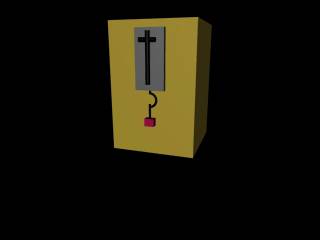


Why is this topic of significance to XMM?
Of all the topics of importance to XMM, it could be argued that vibration is the most important. In order to get into space, XMM had to be launched on a rocket and, because of the nature of rockets, was subjected to a very severe vibrational environment. In some respects it is ironic that for XMM to reach its relatively benign environment in space where it is hoped to be operational for about 10 years, it has to survive the launch phase which last just a few minutes. It has certain connotations with initiation ceremonies though obviously less artificial. The majority of all the effort which went into designing, building and testing XMM which itself took of order 10 years was again directed at these few minutes of the launch phase. Such a situation is true for all space missions to a greater or lesser degree.

What happens during the launch phase?
In order for a rocket to lift off the ground it must be subjected to a force acting in a direction opposite to that of gravity and the magnitude of the force must be such as to produce an acceleration greater than that of gravity. It also has to accelerate the payload to orbital speed in a direction at right angles to gravity so that the payload can orbit the Earth. We can estimate what accelerations are required for both these by applying simple formulae.
Let us assume
a launch time (t) lasting 10 mins
an orbital height (h) of 500 km
an orbital speed (v) of 30,000 km/hour
If we assume constant acceleration (f) then to obtain orbital height we use the equation
h=1/2at2
which gives us about 3 ms-2 ,
and to obtain orbital speed we use
v=at
which gives us about 15 ms-2.
Together these give us about 18 ms-2 which is about twice the acceleration due to gravity, g (9.8 ms-2). That is to say, during the transition from ground to orbit, masses will weigh about three times as much as they do on the ground before they reach the weightlessness of space.

The accleration during the launch of a rocket causes an upward acceleration of about twice that of gravity. This means that the weight of the rocket and its payload are three times that of the rest weight on the ground. The movement of the scale in this animation shows the increase in weight of the test mass when a force is applied.
Please move mouse over image
Obviously the situation is not so straightforward. The rocket fuel has to be used as efficiently as possible. Mass, in the form of fuel, is used up and mass, in the form of spent rocket casings and nosecone etc., is thrown off. Acceleration is therefore not constant and as a result the figure of 18 ms-2 is very likely to be a lower limit.
To a first approximation we can treat this acceleration as a quasi steady acceleration in that its magnitude and direction do not change appreciably. However, there are other accelerations occurring because other forces come in to play. These are very different accelerations in that they are highly variable both in magnitude and direction.
Although the engine burn is essentially a controlled explosion, it can hardly be described as being smooth. The unevenness of the burn generates accelerations in the form of engine vibration which then propagate up through the structure of the rocket and into the payload. There is a tremendous noise generated which is transmitted through the air both inside and outside the rocket structure to the payload. Finally the atmosphere through which the rocket is flying is not homogeneous and, via the uneven resistance of the air, some of the upward translational motion of the rocket is transformed into vibrational acceleration through the nosecone and back into the payload.
The mass of the payload is unchanged throughout all of this. So we can see that structures have to be designed to support more than their own ground-level weight by several factors. Hence all the materials have to strong enough to be able to withstand these forces.
However, there is yet another mechanism which comes into play. This is resonance and can multiply some of these accelerations many times.

